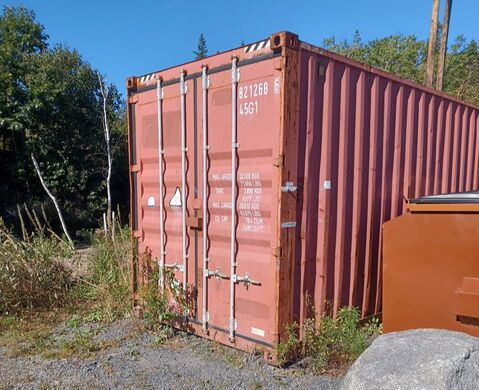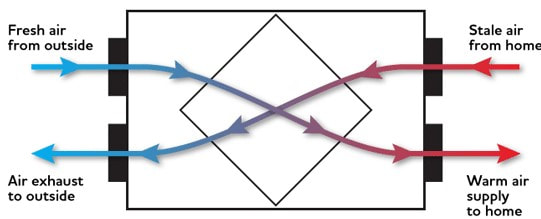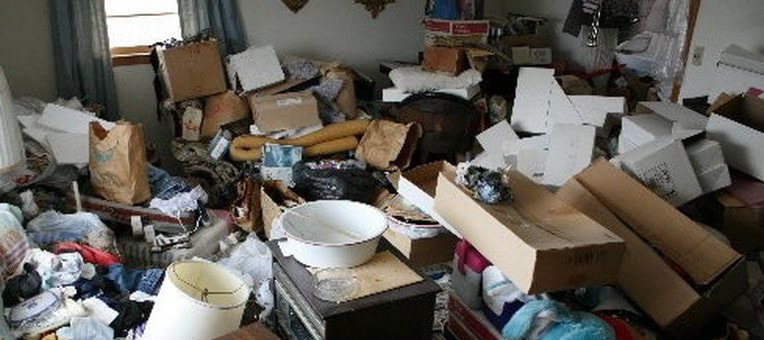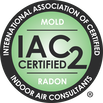Mike's Home Inspector BlogMichael Burfitt |
|
Congratulations on taking the step to becoming a homeowner! I know both as a home inspector and a homeowner (well, technically the bank still owns it, but you get the idea), owning a home is a wonderful milestone, especially in this crazy market! It also comes with its fair share of responsibilities and potential headaches that all the shiny real estate brochures tend to gloss over. As a seasoned home inspector, I've seen it all – from minor issues that could have been easily prevented to major problems that could have been costly to fix (think six figures!). To help you navigate your new role as a homeowner, here are four essential insights that I wish every new homeowner knew: Regular Maintenance Saves Money in the Long Run Many homeowners underestimate the importance of regular maintenance. Simple tasks like cleaning gutters, changing HVAC filters (furnace filters need to be replaced every 3 months), and inspecting caulking around windows and doors may seem insignificant, but they can prevent costly repairs down the line. While easier said than done, try to create a maintenance schedule and stick to it to keep your home in top condition. With the snow gone and warm weather on the way, now is the perfect time to plan out a summer maintenance schedule like I just did, and hopefully the rain will stop so I can continue to get more done. Know Your Home's Systems Understanding how your home's systems work can save you from headaches in the future. Take the time to familiarize yourself with the location of:
Know when and how to perform basic troubleshooting, and always have emergency contact information for professionals in case of major issues (trust me: emergencies never wait for your schedule to clear!). (Over) Budget for Repairs and Upgrades
Owning a home inevitably comes with repair and maintenance costs. Create a budget for both expected and unexpected expenses, including repairs and upgrades. Prioritize projects based on urgency and budget constraints and remember to set aside funds for emergencies. Being financially prepared can alleviate stress when unexpected issues arise. Spoiler from a homeowner and home inspector: repairs and renovations almost always cost a lot more than you budget for and the cheap option usually ends up being the costliest. Stay Proactive Don't wait until a minor issue becomes a major problem. Stay proactive by addressing maintenance tasks promptly and addressing any issues as soon as they arise. Ignoring small problems can lead to bigger headaches and expenses down the line. Whether it's a leaky faucet or a cracked foundation, tackle issues head-on to preserve the integrity of your home. I learned this one at an early age working at a home improvement retailer and saw the many faces of distressed homeowners who did not act proactively or tried to cut corners with cheap DIY "fixes". Being a homeowner comes with its challenges, but with proper knowledge and preparation, you can navigate the responsibilities with confidence. By staying proactive, investing in inspections (*ahem* particularly from a Certified Professional Inspector like me!), understanding your home's systems, and budgeting for maintenance and repairs, you can ensure that your home remains a safe and comfortable haven for years to come with minimal surprises. Happy homeownership! December marks the onset of yet another festive season! As we immerse ourselves in buying gifts, planning holiday gatherings, and cherishing time with loved ones, we also find ourselves in a quieter phase for home inspections – giving us ample opportunity to get into the holiday spirit! In the essence of a beloved Christmas carol, here's the first part of my '12 Days of Christmas' list, tailored for home inspectors: A Partridge in a Safe Tree Ah, the delightful aroma of a Christmas tree: one of my favourite smells of the Holidays! While the scent evokes fond memories, it's essential to ensure safety. Dry trees pose major fire risks, as tragically witnessed in recent incidents in Nova Scotia. Regularly watering the tree is crucial, alongside using indoor-rated lights (modern LEDs are generally versatile for indoor and outdoor use due to their efficiency). Extra caution is needed when young children or pets are around. Two Turtle Doves Nesting The warmth of a fireplace on Christmas morning is unmatched, reminiscent of childhood joy. However, proper control is vital. Scheduling an annual inspection by a qualified technician for both chimney and fireplace is imperative. A cracked firebox, as seen in a recent inspection, can be a significant hazard leading to potential fires. Creosote buildup remains a serious concern and a leading cause of house fires. Compliance with insurance guidelines regarding fireplace use is also essential. Three French Hens’ HVAC Checks Modern HVAC systems offer reliability and comfort but aren't maintenance-free. Regularly changing furnace filters, cleaning HRV/ERV units and bath fans biannually, and ensuring thorough yearly cleaning of dryer vents is crucial. Lint accumulation from clothes is highly flammable, posing fire risks. Beyond functionality checks, inspections identify potential issues that could escalate in the future. Four Calling Birds' Roof Inspection
Roof integrity often determines whether leaks are present or imminent. Late winter/early spring brings a surge in calls about roof leaks. Residential roofs, contrary to common belief, aren't waterproof; they're designed to efficiently shed water. Melting snow, however, poses challenges. Small leaks can persist undetected for months, so regularly peeking into the attic and promptly calling for repairs or replacement when roof shingles blow off is crucial. Stay tuned for part two next week, featuring additional essential home inspection tips! Welcome to Nova Scotia! There has been a recent spike in people who have chosen to make our city home from both across Canada and around the world and it is wonderful to see the vast and growing cultural diversity when walking around town. My son will get to grow up in a community that is much more welcoming of diversity and valuing of inclusion and I am happy to see our city change for the better.
However, as a professional home inspector based in Halifax and having grown up on the Dartmouth side of Halifax Harbour, I see a lot of misconceptions about homes in our community. The overwhelming majority of professional home inspectors in the world are in either Canada or the United States and this is not a coincidence. North America is certainly an economically strong region but there is a common misconception that homes are virtually maintenance free. This is FAR from the truth, and I have never inspected a home that did not have at least one issue (yes, even brand-new homes). Homes in North America are NOT Built Like Tanks There is a commonly held belief that houses in Canada are well built using strict building codes. This is only partial correct: while major structural issues (such as catastrophic collapse due to high winds) are extremely rare, modern homes are often built as cheaply as legally possible. This means that engineered components that while affordable, need to be properly installed to be effective and have limited lifespan that can be greatly reduced under certain conditions (like moisture penetration), such as roof and wall components. Unfortunately, on many building sites these can be installed by subcontractors not as familiar with proper installation techniques. We Have Mild Winters (and That’s a Bad Thing) While compared to the world at large we have brutally cold winters, looking at just Nova Scotia we typically have warmer winters than the rest of Canada. This means we usually get 8-10 mini winters with rain and warmer temperatures in the middle. As a homeowner I appreciate the snow being cleared but as a home inspector this is a challenge to work around. One consequence of our weather is that the frequent freeze/thaw cycles can cause significant destruction to homes through the expansion of water as it cools. Once water gets into building cracks, it can quickly cause further damage. This is one reason with Stucco-cladded homes are so rare in our province. Homes are Usually Built as Single-Family (3-4 people) Homes Until recently, it was considered unusual in North America to share a home with another generation or family. Once children reached their 20s, it was commonly expected that they would move out on their own. Today, it is very common to see 6 or more adults living under a single roof. While this is a great way of sharing resources, this is a concern to home inspectors. Put simply, modern homes need to be carefully balanced: HVAC, plumbing and electrical systems that work great in a 2-person household can experience significant issues in an 8+ person household and can experience major problems that never existed before. Beware the Flipped House I have seen many newcomers buying flipped (homes bought, renovated, and quickly resold) houses that I can see have major structural issues. While not all flipped houses are bad, I have seen far too many recent new arrivals pay a premium for homes that still have major and very expensive issues, such as electrical and plumbing problems. Home inspectors as a rule have an overall negative view of flipped homes as many are renovated as cheaply and quickly as possible. Remember, a home inspector is trained and experienced in telling the difference between a cheap cosmetic flip and a high-quality renovation. There is no question that houses are not nearly as plentiful as they should be, but you should still get all the information about your new home before making that financial commitment as it could cost you a lot more in the long run. At this time of this writing in the fall of 2022, housing prices are beginning to fall in Halifax. That is of course good news but the simple fact is that, when factoring in higher interest rates, housing remains unaffordable for far too many people in Nova Scotia. Rightfully, some people are looking for alternatives to the sky-high cost of housing and one such up-and-coming trend is that of shipping container homes. Sounds like a great way to build a home at a great price, right? Not so fast! It certainly sounds appealing: a disused shipping container can be purchased for only a few thousand dollars and is constructed mainly of solid steel. They have literally been around the world multiple times in all weather conditions and are built to last. This however does not mean they necessarily translate to a solution to the housing crisis. What’s Wrong with Shipping Container Homes?
The biggest issue is that they are small. They are a decent height for those not over 6’6” (like almost everyone but me) at 8.5 feet and are plenty long (usually 40 feet) but are a mere 8 feet in length. That doesn’t sound terrible until you consider that…. Homes Need Utilities! A home is a complex system of interdependent components: electrical, plumbing (both supply & waste) and heating, ventilation & air conditioning (HVAC) pipes that run behind the walls in all homes (and are required by all building codes)! This means that a significant portion of the interior space needs to be dedicated to these items, further reducing the living space. Speaking of HVAC…... Metal is a Conductor of Heat AND Cold When I was a teenager, I occasionally helped load shipping containers that were bound for various projects in Northern Africa. On one hot day, we measured 52 degrees Celsius inside the container! It was like being in an oven and while I wasn’t loading anything that day, I tried to see how long I could last. It was less than a minute before I started sweating uncontrollably and I had to leave. Metal is a conductor both of heat and cold and we certainly get both extremes in Nova Scotia. Neither air conditioning nor high R insulation are required in our province, but I don’t see how one can survive without them in a shipping container. That’s not even getting into…. Shipping Containers are (Not) Really Strong Shipping containers are strong and heavy, right? Think about it: they are stacked 9 high on ships and face countless treacherous weather conditions in the open sea. However, unlike goods, people need air! (windows & doors). You might think that it’s as simple as cutting a few holes in the steel, but the fact is that these containers are designed to transfer all the weight to the ends, so cutting a hole for a window requires structural reinforcement. Furthermore, many Engineers, Architects and Contractors refuse to work with shipping containers as they are not familiar with them (and that goes for home inspectors too!) and consider them too high a liability to work on. An Important Disclaimer I am NOT in any way an expert on construction of shipping container homes and there are some advantages that I did not touch on. As well, you may be reading this in the future and this type of construction might go mainstream with improvements in construction techniques. I am just pointing out that in 2022, the cost savings can be quickly wiped out with all the expensive modifications required to make containers habitable. I am in favor of anything that can make housing affordable to everyone on the planet but while on the surface this seems like the ideal solution there are too many disadvantages to this type of construction to consider it a viable option at this time. I owe a lot of my skill as a home inspector to the time I spent working at NSCC (Nova Scotia Community College), where I was not only able to access high quality training but was able to see firsthand how complex modern technology helps to create safe, healthy, efficient buildings. NSCC is a leader in sustainable building practices, and I have taken plenty of courses on topics such as Heating, Air Conditioning, Pipe and Air System Design to name a few. I also learned to apply many of these principles to my own home and one project I will be working on soon is to look at replacing our HRV, possibly with a modern ERV. Modern building codes require the installation of mechanical ventilation (i.e. just exhaust fans are no longer acceptable) as modern homes are built very tight for energy saving purposes. What is an HRV? ERV? HRV stands for Heat Recovery Ventilator while ERV stands for Energy Recovery Ventilator. These two systems are very similar with the difference being that an ERV recovers both heat AND moisture. Personally, I think they should be called HMRVs (Heat & Moisture Recovery Ventilators) as this would be a better descriptor. Here is a basic diagram about how these systems work. While it appears the air mixes based on this picture, they remain completely separate with only heat (and possibly moisture) being exchanged. So, Does This Mean a ERV is Better?
Not necessarily. While ERVs are considered a step above HRVs (and more expensive!) opinions vary on which is the right choice in Nova Scotia. While we do have humid summers, having too much humidity is not an issue for the rest of the year and heating is prioritized over cooling in our province. When considering installing a new unit, remember mechanical ventilation is a job that should be left for a qualified HVAC contractor and they can offer the best advice on what will be effective for your situation. How Are These Units Different from an Air Exchanger? An air exchanger does exactly what it says: exchanges air from inside to outside and replaces it with outside to inside air. This works great in theory but in reality it is rare that outside conditions are as comfortable as the ideal indoor conditions. The air outside is typically colder and bringing in constant fresh air without capturing heat from the air vented outside will lead to unnecessarily high energy bills. In short, a HRV is a step above an air exchanger with an ERV being another step above that. HRVs and ERVs Need Maintenance Too! While they are generally very reliable and are designed (and supposed) to run 24 hours a day for 20+ years, they still require regular maintenance just like any piece of HVAC equipment. The biggest faux pas (other than a home missing an HRV/ERV entirely) I see is units that have not been cleaned (often times it is clear they have NEVER been cleaned!). It is important to inspect for proper operation and clean the unit according to manufacturer's instructions, typically once a season. Are these units pricey? Absolutely, but it is a small price to pay for a clean and healthy home! Recently we have been doing a little spring cleaning in the summer and trying to do some organizing. I must admit I have a hard time letting go of items “just in case” although I certainly cannot be considered a hoarder in any way. There are several TV shows that cover the topic of hoarding and while they are informative, they tend to show the worst examples of a hoarding disorder.
What is Hoarding? The generally accepted definition of hoarding is someone who has “persistent difficulty with getting rid of possessions, especially with little or no value”. Like many other issues, it is not an all or nothing condition and various stages of hoarding exist. Generally, for a home inspector this means a hoarded home has items stored outside the normal expected areas in a house such as in stairways, in the middle of living room floors and an excessive amount on kitchen counters. The Main Problems with Hoarding The most obvious one to home inspectors is that an unusually large number of belongings in a home makes it difficult to do our jobs. We don’t have the ability to move a significant amount of homeowner belongings, and this can conceal signs of water damage or mold growth. The biggest concern however is safety. Hoarding and Emergencies When you think of emergencies, most people think of needing a clear path to escape in a fire or for paramedics to enter. Even with a path cleared that doesn’t mean that fire safety can be ignored. It takes very little time for toxic smoke to overwhelm someone, often in seconds rather than minutes. The more obstacles to walk around, the higher the chances of a tragic outcome. From a home inspection point of view, there is another potential emergency that few new homeowners think of: access to shut offs. All homes should have at least 2 and possibly 3 or more: they are usually located:
Burst plumbing in particular can do devastating amounts of damage in only a short period of time. Electrical arcs can cause fires if not immediately de-energized and electrocution can occur by touching even a single live wire if the electrical source is not stopped immediately. Some outlets in a home are protected by GFCI (Ground Fault Circuit Interrupters) but this is not universally required on all receptacles, particularly in older homes and, like an airbag or a seatbelt should not be 100% relied on to save your life. Too Many Things are a Liability, NOT an Asset Of course, many of us find that we have accumulated many more items in our house than we had when we moved in but it is vital that we regularly manage our clutter to keep it from impeding the safe function of our home. Too many assets can actually be a liability. Always keep things in designated storage spots so you will have access to everything necessary to maintain your home and be safe. Your local home inspectors and emergency responders thank you! It seems like every single home renovation show has a segment where the client expresses their love for having an open concept home. A few scenes later, out come the sledgehammers and within a few minutes we see a wonderfully clear, open room. If only it was that easy! I am a home inspector and not a building contractor, but I certainly can tell you without any hesitation that tearing out a wall is far messier and more expensive and disruptive than any TV show implies. As a general rule, I personally am not a fan of open concept design and here are some reasons why I believe you should think twice before taking part in this type of renovation.
Load Bearing Walls Contrary to some horror stories you may read of load bearing walls being cut down, in most modern homes the roof is constructed using engineered trusses, which generally do not require support (for the top level of the house only) aside from the exterior walls. However, in Nova Scotia and most area of North America only a licensed engineer can certify a wall is not load bearing. There are lots of articles online about how to identify a load bearing wall, but it is not always as simple as an internet search. Plumbing & Electrical When plumbing and electrical systems were originally installed, no thought was given to what the home would look like 30, 40, or 50 years into the future. A lot of these shows make it look like a simple 2-hour job to move some wires and pipes when in reality, it can be a very difficult and expensive task. These two systems have to be engineered carefully and relocating these features is not as simple as simply adding new pipes and wires. There is a very good reasons plumbers and electricians are expensive and it isn't because they are just greedy. Houses are Designed to Have Zones Modifying the structure can affect the home’s HVAC (Heating, Ventilation and Air Conditioning), as these systems were designed with walls and separation in mind. Not only can energy flow be disrupted and possibly require remediation but there is no longer a way to “seal off” specific rooms. For example, in our home the kitchen heat can be turned low after supper to save energy, but this is not generally possible in an open concept house. There is also the issue I see in some flipped houses where the stove is moved from an exterior wall towards a more central location. Rarely is the ventilation factored in and while it actually is NOT required by any building codes, it won’t take long for the lack of a kitchen fan to become unpleasant. NOISE! We always have a child and sometimes more than one in our house. As great as kids are, there can be no doubt they are noisy. With an open concept house, the sounds of children (or their favourite shows) can travel throughout the home. Asbestos Any home built before the 80s almost always has asbestos in it. While generally harmless if left alone, it becomes very dangerous when disturbed. Always assume any home built before the 80s has asbestos in the walls until proven otherwise. For these reasons and many more, it is important to think twice before knocking down walls. TV shows are designed to provide a WOW factor but as a homeowner, unforeseen issues can develop after the sledgehammers are brought in and the walls come down. |
Archives
July 2024
Categories
All
|
|
Inside Edge Home Inspections Ltd.
Halifax, NS 902-209-9921 [email protected] Proudly Serving the HRM & Central Nova Scotia |
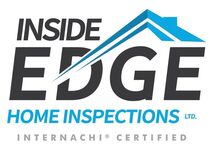
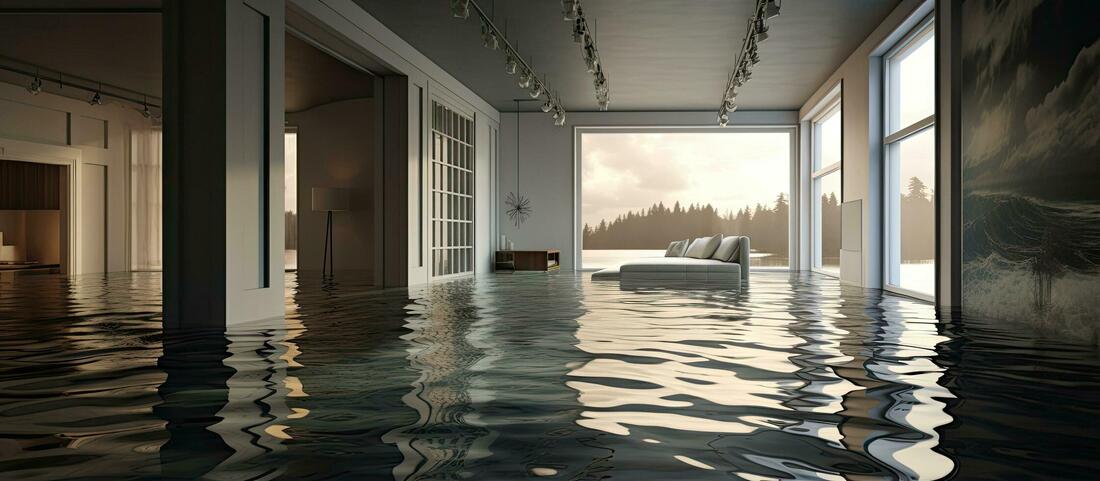
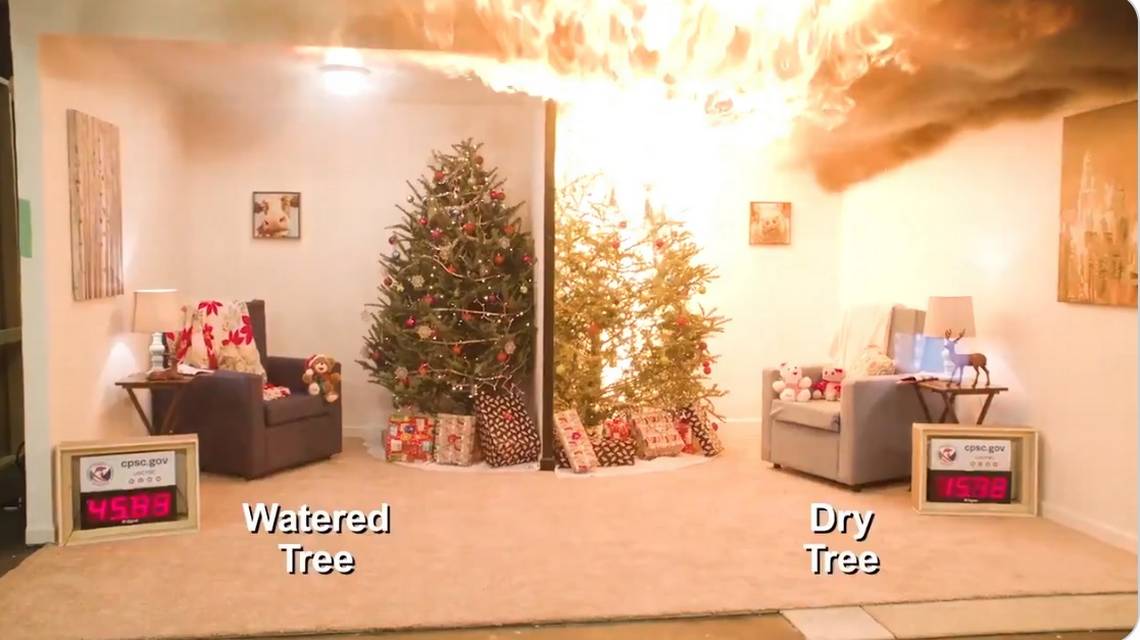
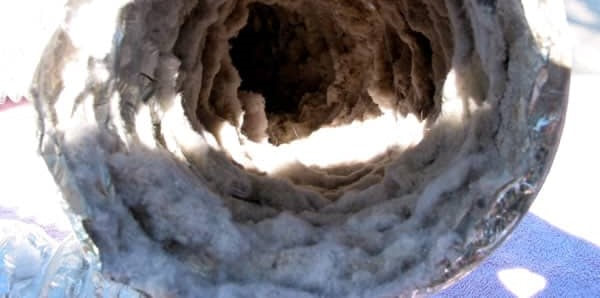
 RSS Feed
RSS Feed 
